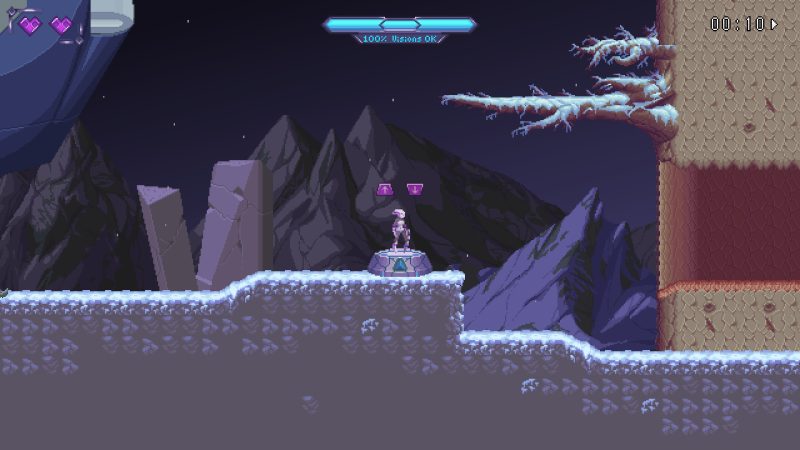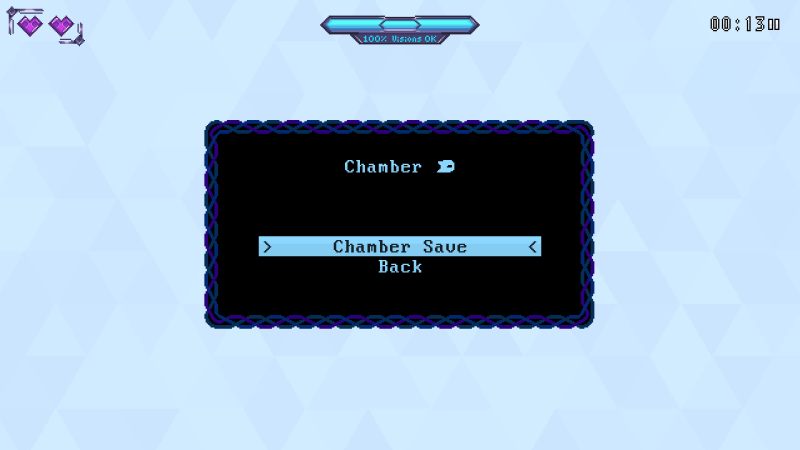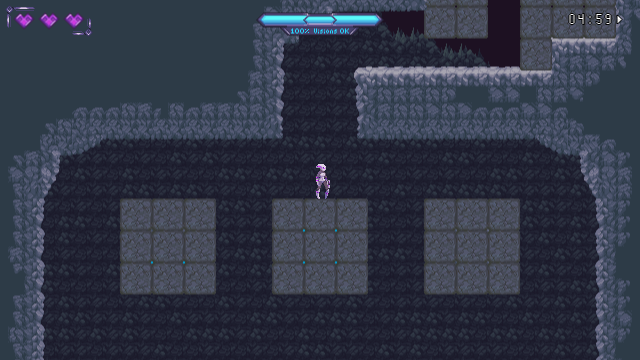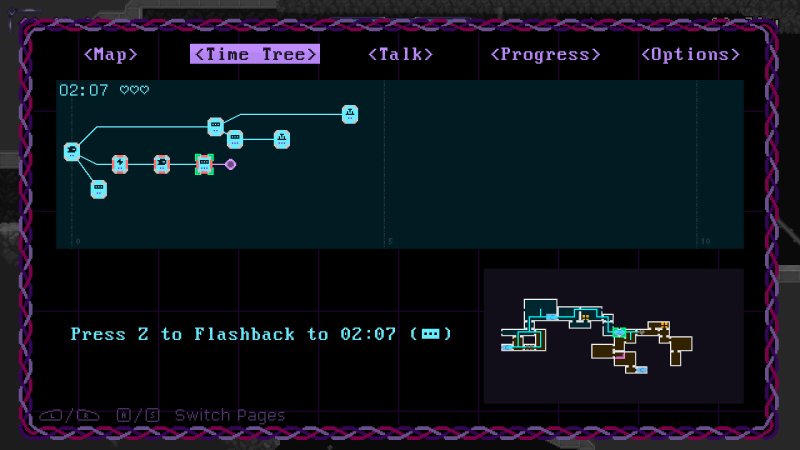Hi everyone. It’s been a while since the last post, and a lot of things have been added and tweaked. Not least of which is refining a large and very important new mechanic. We’ve seen how Oracle can peek a few seconds into the future with the Vision and Flashback mechanics. But her clairvoyance is not limited to this short amount of time. Vision Soft Reset also features the
Chamber Flashback, a unique mechanic that not only allows us to revert time by several minutes, but also allow us to revisit different locations and scenarios created from altered timelines. This is a beefy mechanic that will force players to rethink how they approach these kinds of adventure games.
But first let’s talk about something else: game saving. A pretty standard feature in games, saving creates a record of the player’s progress that can be resumed later. Many games use automatic saves, although it’s somewhat of a tradition to have manual saves in retro-inspired adventures. But as we’ll see, this format is very deliberately chosen to integrate with Vision Soft Reset’s other mechanics.

Saving is done on Chamber Platforms.

Each platform is identified by a unique icon.
It works how most gamers would expect. Explore further and you’ll come across more save platforms.
Each save records Oracle’s location, time, and max health (among other things). These saves are visualized in an in-game menu known as a
Time Tree. Each node on the Time Tree represents a time the player saved. The horizontal position of the node represents the time the game was saved, the icon represents the location, and the dots represent the player’s health. There is also an additional node which shows the player’s current time and location.

What an average player’s Time Tree might look like shortly after saving at the second platform.
Let’s continue the game. Here’s a good chance to showcase some new areas and obstacles made since the last update. Notably we found a health upgrade (bringing our max health to 3 hearts), and the Charge Shot decryptor (decryptors are codes that unlock features of Oracle’s suit).

A mysterious set of panels and a locked door. Might have to come back here later.

Obtaining health upgrades increases maximum health by 1 heart.

Decryptors unlock one of Oracle’s suit’s abilities. This one in particular gives us the Charge Shot.

Breaking down barriers with the Charge Shot.

Peculiarly arranged breakable tiles.

An update on the Time Tree at this point. It’s been some time since the last save, but we covered more ground.
We end up in a room containing some familiar looking symbols. Unfortunately, we’re also stuck. We can’t jump back up the way we came, and there doesn’t seem to be another way out. What can we do now?

Trapped at the bottom of a room. Is this the end of our journey?
Here’s where the
Chamber Flashback comes in handy. By selecting a node on the Time Tree, we’re able to revert back to a previous time that we recorded at a Chamber Platform.
Observing the time in the upper right, we see that we didn’t teleport to a different location, rather we reverted to where we were a few minutes ago. It’s kinda like reloading an old save file. Well now that we’re out of that sticky situation, what else can we do?

The puzzles get more complex later in the game, no really!
So naturally we solve that puzzle from before and open a nearby barrier. But how did Oracle know the correct combination? She hasn’t gone into the room revealing the solution yet. As it turns out, everything from when we last saved up until we got stuck in that room never actually happened.
It was all just one big vision that Oracle had. We were able to take information we found from one possible future, and apply it to problems encountered in the present. Pretty neat!

Oracle can still use the Charge Shot as well.
Codes are also sources of information that can be recalled through time. Remember that the Charge Shot decryptor isn’t exactly an upgrade, it’s a code that unlocks abilities that have always been a part of Oracle’s suit. Just like how we remembered the combination that unlocked the barrier, Oracle remembers the code that lets her shoot charge shots. Since we’re not using upgrades, everything resulting from a Chamber Flashback sounds pretty good, right?

Wally might be ruining the mood, but he brings up a good point.
Not quite. Even though we saw a vision of a health upgrade, remember that in this timeline we never actually collected it yet. Health upgrades are examples of
physical items, things that don’t transfer across visions. We should probably go back and get it before continuing into the unknown. Note that if we reverted to a time after we picked up the upgrade, we wouldn’t be having this problem. We should probably save after picking it back up again (which will also record the newly opened barrier).
It’s up to the player to manage physical items when utilizing Chamber Flashbacks. It’s an evil necessary for preserving consistency with the game’s rules. It’ll take some getting used to, but smart players should have no trouble adjusting to this new style of gameplay (hint: save often). It’s not as simple as it appears though. In a later update I’ll explain how precious time is in Vision Soft Reset, and why using time to snag some upgrades instead of taking the fastest route might be a disadvantageous tradeoff.
Finally, visiting different areas after reverting to a previous save will result in branching timelines. After saving at the first platform we traveled right, but what happens when we instead go left? Each new destination is recorded as a different branch in the Time Tree. These branches are completely custom built by the player’s actions, and it’s up to them to find the best branch that gets through the game. What will your Time Tree look like?

Time Trees become more complex over time.
We’ve only scratched the surface of the depth the Chamber Flashback and Time Tree mechanics bring to Vision Soft Reset. More will revealed in later updates!
 Community
Community DevLogs
DevLogs Vision Soft Reset: metroidvania where you can see the future
Vision Soft Reset: metroidvania where you can see the future Community
Community DevLogs
DevLogs Vision Soft Reset: metroidvania where you can see the future
Vision Soft Reset: metroidvania where you can see the future
